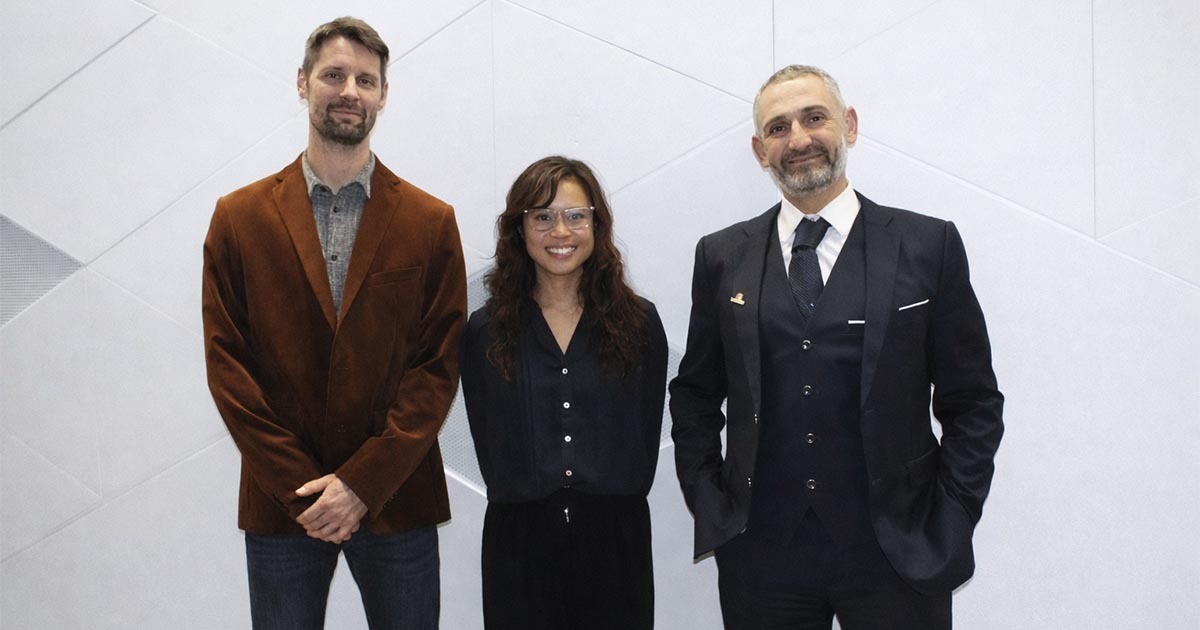New Wing Morphing Technologies in Support of Next Generation Drones
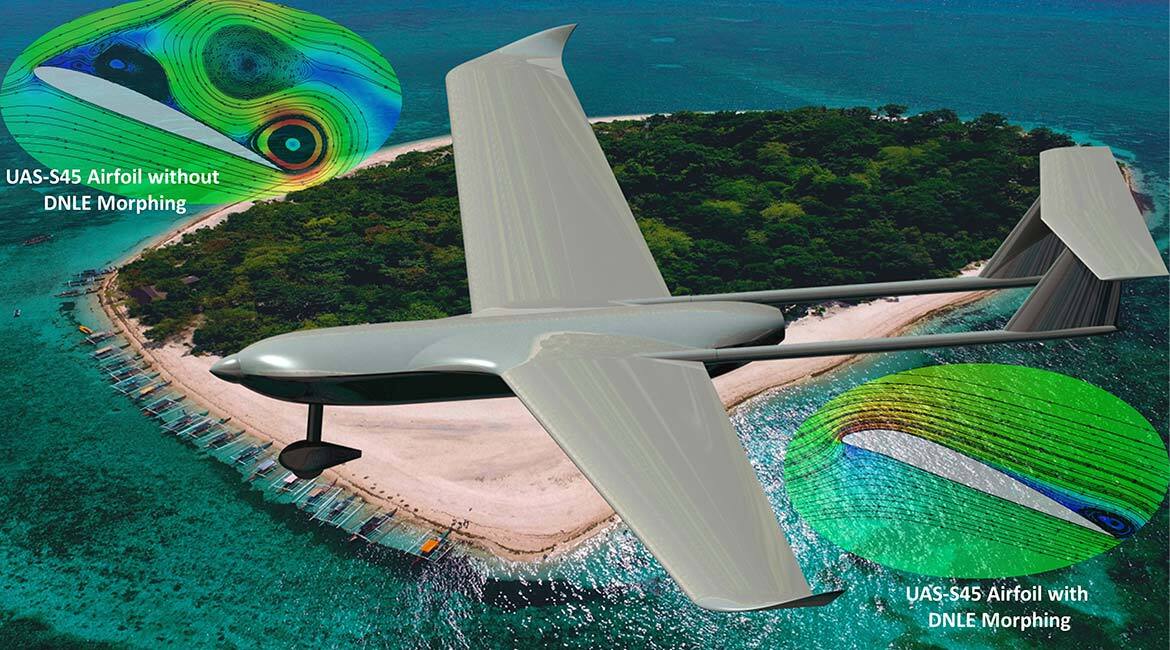
The image belongs to the authors. Copyright.
Morphing wings allow an aircraft to fly more efficiently than a classic fixed-wing design. A morphing wing can modify its geometric shape in flight to maximize aircraft aerodynamic performance. Wing-morphing technology presents several challenges—morphing wings will play an important part in aviation's future due to its benefits in terms of fuel efficiency and emissions reduction. We are proposing the aerodynamic optimization of a Droop-Nose Leading-Edge (DNLE) morphing on a well-known UAV, the UAS-S45. To do this, we are using a novel Black Widow Optimization (BWO) algorithm to enhance aerodynamic performance by minimizing drag and maximizing aerodynamic endurance in the cruise flight condition. Numerical studies validated the effectiveness of the optimization strategy, and the optimized airfoils have shown a significant improvement in overall aerodynamic performance by up to 12.18% drag reduction, and by up to 10% aerodynamic endurance increase for the UAS-S45 optimized airfoil configurations over its reference airfoil. These results indicate the importance of leading-edge wing morphing in enhancing the UAS-S45 airfoil’s aerodynamic efficiency. Keywords: Morphing Wing Technology, Droop-Nose Optimization, Black Widow Optimization (BWO), UAS-S45
A Technology Inspired by Birds
Unmanned aerial vehicles (UAVs), or drones, are widely used in real-world applications including agriculture, surveillance, film industry, military, and transportation [1]. In the near future, they could also be largely used to assist during search & rescue missions, monitor remote or inaccessible environments, and deliver packages. UAVs usually have a conventional structure, comprised of a main body and fixed wings or three or more rotating propellers as in multicopters. Researchers and designers, however, have been developing the next generation of drones [2].
Birds have inspired aircraft control and design for over a century. The Wright brothers designed a roll-control device inspired by avian flight. Birds are generally more agile than small airplanes while flying in the atmospheric boundary layer—this causes unique control issues due to substantial wind-speed and direction variations compared to large-scale aircraft flying near the edge of the troposphere. The birds’ flight skills are enabled via neurological control and their ability to flexibly morph their wings or tails. These characteristics have led to a new generation of avian-inspired morphing UAVs with the goal of leveraging avian flight control to enable multi-objective tasks and missions.
Morphing-based wing designs can result in high-lift coefficients, reduced drag, and reduced noise [3-5]. The development of a gapless morphing technology improves crucial performance parameters such as aerodynamic coefficients, maximum speed, fuel consumption, manoeuvrability, flight range, and stability, which is key to achieving environmental goals. Replacing flaps and slats with morphing wing elements increases performance. Aircraft featuring wing-pivoted flaps, slats, and trailing-edge surfaces show an increase in performance. These hinged surfaces have disadvantages when deployed and retracted. Openings between the high-lifting surface and wing can create noise, turbulence, and drag.
Many methods have been used to improve aircraft efficiency, notably the aerodynamic efficiency of the wings. Dedicated researchers at the Research Laboratory in Active Controls, Avionics, and AeroServoElasticity (LARCASE) have been working on methods to reduce aircraft fuel consumption using Morphing Wing Technology [6-16]. This technology could potentially save energy and help reduce greenhouse gas emissions to meet the standards set by the ICAO [17]. Additionally, “morphing” is applied in practice on Unmanned Aerial Vehicles (UAVs), because of their reduced scale and lower complexity in terms of wing design structure and energy consumption expressed in terms of actuation power [18-21]. Figure 1 shows the leading-edge morphing wing mechanism, consisting of a flexible skin and its actuation system. Morphing is achieved with compliant hinges connected to a linear actuator to realize the desired optimized airfoil shapes, obtained in a preliminary aerodynamic design study.
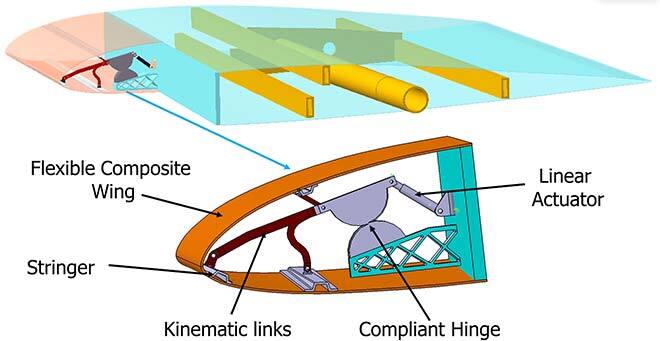
Figure 1. DNLE Morphing wing model
The purpose of this morphing wing optimization project is to obtain an aerodynamically efficient airfoil shape using the Droop Nose Leading Edge (DNLE) for the UAS-S45. The outcome of the morphing wing project demonstrated the simultaneous variation capacity of the wing airfoil’s specific parameters to improve the UAS-S45 performance.
Overview of the Optimization Strategy
We use an optimization framework to define the Droop-Nose Leading-Edge (DNLE) morphing concept. This method requires a definition of the fitness function, parametrization of the geometric shape, and an optimization algorithm. Figure 2 illustrates the optimization strategy employed in this investigation. It involves generating airfoil shape variables using Class Shape Transformation (CST) while conforming to geometric constraints. The geometry is processed in two solvers, XFoil and Ansys Fluent, and a unique optimization algorithm based on the Black Widow Optimization (BWO).
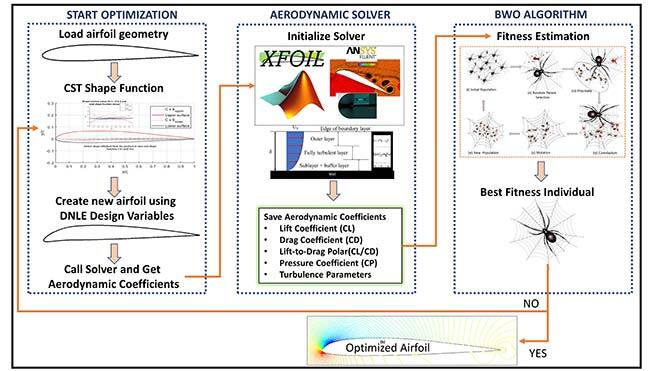
Figure 2. Optimization Procedure
Class Shape Transformation (CST)
The CST method is an intuitive, robust, smooth, and flexible parameterization method for representing the shapes of aerodynamic bodies. The CST with a low order polynomial is also suitable for airfoil preliminary design and optimization purposes since it needs only a few airfoil parameters to obtain a specific shape of airfoil. The CST designs the airfoil by summing up the individual contributions of its basic function, which is obtained by using Bernstein Polynomials.
Black Widow Optimization (BWO)
Several algorithms, inspired by biological systems including Particle Swarm Optimization (PSO), Bee Colony Optimization (BCO), Ant Colony Optimization (ACO), and Genetic Algorithm (GA) have been used for airfoil optimization by our LARCASE team members [16, 22, 23]. Each of these methods optimizes airfoils globally. Recent work has proposed the use of the Black Widow Optimization (BWO) algorithm to solve numerical optimization problems [24]. This algorithm was inspired by the life cycle of the black widow spider. The black widow is very well known for its unusual mating behaviour—which served as an inspiration for the algorithm used in this study—as it is considered to be a combination of evolutionary and swarm techniques. The stages of the BWO algorithm are outlined as follows:
- Initialization
In the initial population phase, each spider represents a “potential solution.” The initial spiders pair up in an attempt to reproduce their future generation.
- Procreation
The future generation is reproduced by the unique mating behaviour found in black widows. At the beginning of mating a couple of spiders, a mother and father, are selected to mate based on the Procreation rate (Pr). The female black widow eats the male during or after mating.
- Cannibalism
There are three types of Cannibalism: sexual, siblings, and cannibalism between offspring (children) and mother. This process is analyzed and documented proportionally to the number of survivors, yielding to a cannibalism rating. These fitness ratings distinguish weak from robust offspring.
- Mutation
In the Mutation stage, the population is randomly picked from the population to be mutated. Each of the randomly chosen solutions flips two elements of the potential solution array. By integrating all populations, the new population is evaluated and stored.
The flowchart in Figure 3 is a schematic illustration of the BWO algorithm’s main steps.
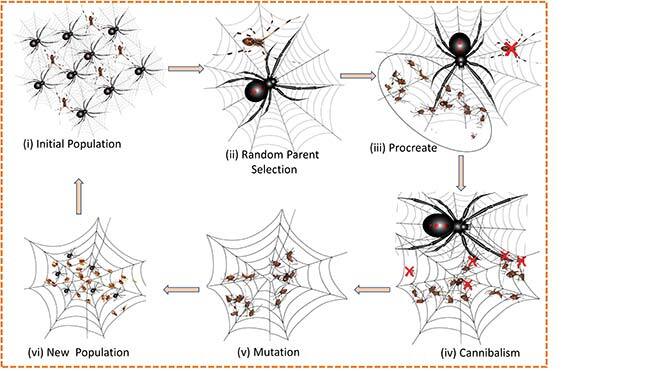
Figure 3. Black Widow Optimization (BWO) algorithm
Key Finding
Drag minimization is achieved by optimizing the shape of a morphing Droop-Nose Leading Edge (DNLE) in order to increase aerodynamic efficiency during the cruise phase. The morphing location is variable and DNLE morphing takes place within 30% of the chord to ensure that the rest of the airfoil remains as a wing box (i.e., no changes occurring). The performances of the reference and optimized airfoils are compared for the cruise flight condition at an angle of attack of 2°, as presented in Table 1. The drag coefficient decreases to 0.00678, which represents 12% of its initial value. An aerodynamic efficiency improvement of 5% is achieved by optimizing the lift-to-drag ratio.
Table 1. Aerodynamic coefficient comparison between the reference and the optimized airfoil

Another case concerns optimizing the shape of a morphing Droop-Nose Leading Edge (DNLE) airfoil—with respect to the reference leading edge airfoil—in order to increase aerodynamic efficiency during the cruise phase by maximizing “aerodynamic endurance (AE)”. Table 2 shows that the optimization process led to an increase in endurance maximization, characterized by AE in the optimized DNLE airfoil. Furthermore, the AE values increased from 29.52 to 32.48, indicating a 10% better AEA for the UAS-S45 DNLE airfoil configurations than that of the reference airfoil. At the same time, the optimized airfoil drag coefficient was smaller than the reference airfoil drag coefficient.
Table 2. Comparison between aerodynamic endurance and the drag coefficient for the reference and optimized airfoils

The complete flight profile of a surveillance-based UAV consists mainly of take-off, climb, cruise, standby, evacuation, return, descent, and landing phases, where engine working states in different flight phases vary. Therefore, all missions require improved performance, and they are considered for the different flight times and fuel consumption. A Simulink model of a UAS-S45 was developed for fuel burn rate and specific fuel consumption in MATLAB by using the thrust coefficient obtained for both engines, as well as their associated fuel consumption.
By assuming a stable flight—where thrust and drag were equal to maintain a constant speed—fuel burn rate and specific fuel consumption data were obtained, as shown in Figures 4 and 5 respectively. While subfigure (a) shows the performance of a non-morphed baseline airfoil aircraft, subfigures (b-d) illustrate other optimization results. In (b), the optimization aimed to minimize the drag and to obtain a slightly longer flight time at a higher airspeed (approximately 6 minutes at 90 knots), as well as a slightly lower maximum SFC (18990 lbs reference and 18200 lbs morphed). In (c), the airfoil was optimized to obtain a better fineness ratio, and shows an overall decrease in SFC, except at lower airspeeds (20 m/s and lower), resulting in an overall higher range except for a limited set at said lower airspeeds. Finally, subfigure (d) indicates a longer flight time in all conditions, especially at lower speeds, though there is a higher maximum SFC (27610 lbs), as the airfoil was optimized to obtain a higher ratio.
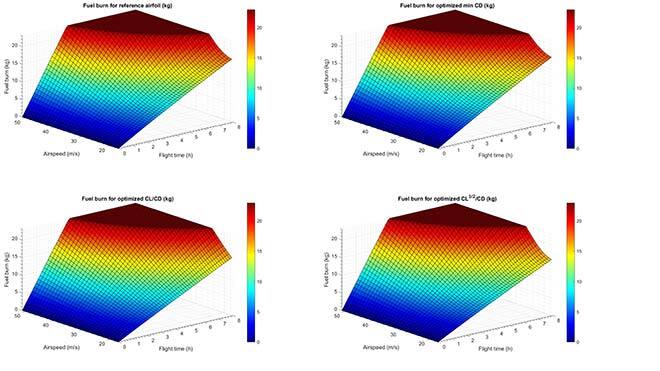
Figure 4. Comparison of fuel burn rate over flight time at different speeds for the reference and optimized configurations of the UAS-S45
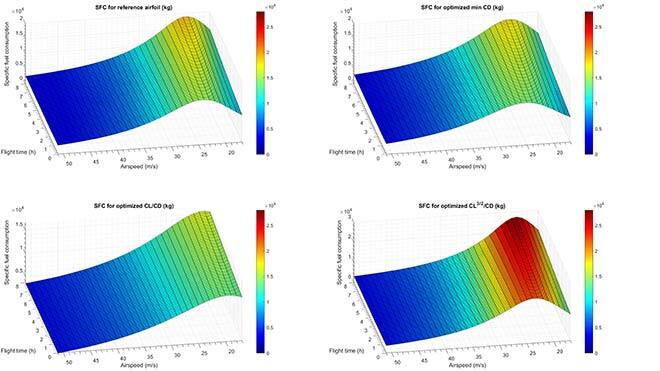
Figure 5. Comparison of specific fuel consumption with flight time at different speeds for the reference and optimized UAS-S45
Conclusion
Morphing wing technology is the future of aviation design. UAVs could fly efficiently in diverse conditions by changing wing shape in flight, just like birds. Morphing wing technology optimizes fuel efficiency and manoeuvrability. The DNLE optimization was designed to increase the aerodynamic performance of the UAS-S45 at the cruise phase for an angle of attack of 2°. The DNLE optimized airfoil showed that the drag coefficient decreased to 0.00678, with a 12.18% drag reduction in comparison to the reference airfoil. In addition, an aerodynamic efficiency improvement of up to 15.22% was achieved by increasing the lift-to-drag ratio for the optimized UAS-S45 airfoil.
Additional Information
For more information on this research, please read the following research paper:
Bashir, M.; Longtin-Martel, S.; Botez, R.M.; Wong, T. Optimization and Design of a Flexible Droop-Nose Leading-Edge Morphing Wing Based on a Novel Black Widow Optimization Algorithm—Part I. Designs 2022, 6, 10.


